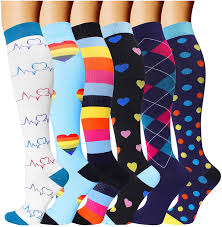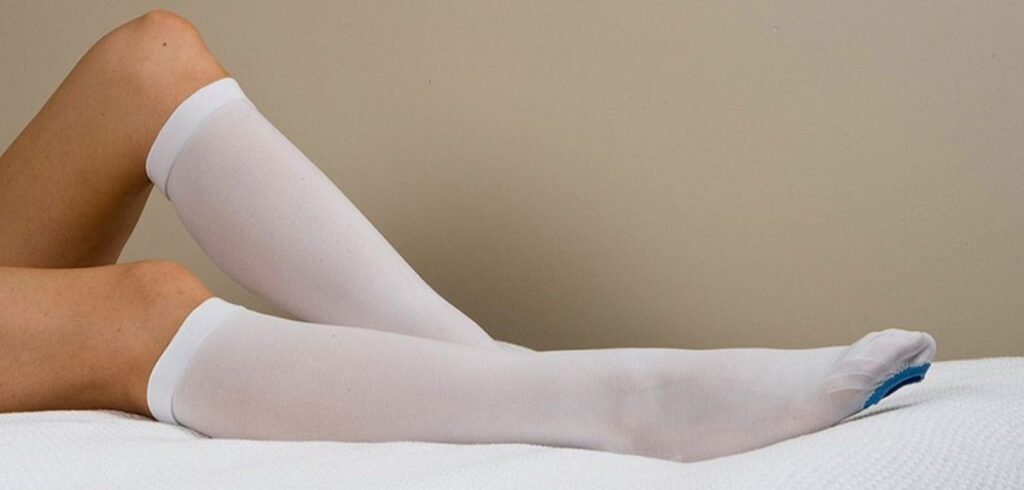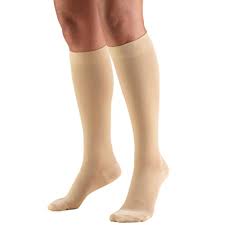
What Do Compression Socks Do
Compression socks, also known as compression stockings, help to treat and prevent a wide range of issues in the legs and feet. They use compression therapy to promote blood flow to lower limbs to reduce the pain and swelling in the legs and ankles.
Even though compression socks are generally prescribed by professional medical practitioners, people who are aware of their benefits are also known to use them. However, before you start using the compression stockings, it is important to gain a proper understanding of them. Read on to know more about these special socks, the benefits of using them, and usage tips and guidelines.
What Are Compression Socks?
Compression socks are specially manufactured snug-fitting socks designed for medical use. These stretchy socks apply gentle pressure to the calves and ankles of the users to help promote blood flow.
They come in various sizes, lengths, colors, and compression strengths of different levels. No two compression socks are the same and the quality of the material, the size, the durability, and the amount of compression are decided as per the needs of individual users.
What Are Compression Socks For?
Compression socks are generally used for treating conditions that affect the circulation of blood in the lower limbs. Depending on the specific problem that the patients are suffering from, they might need to wear these socks for several years or even for the rest of their life.
Compression stockings are specially designed to provide relief in a variety of conditions. These include varicose veins, lymphoedema, and deep vein thrombosis which can cause much discomfort to the patients.
Types Of Compression Socks
There are three main types of compression socks available in the market today. These include the following.
Graduated Compression Stockings
The graduated compression stockings apply the strongest pressure at the ankles. The pressure decreases gradually on moving higher up the leg. These socks are designed to meet the specific length and strength needs medically and offer better mobility compared to other compression stockings. The socks require a professional fitting and are typically available in either knee-high or thigh-high lengths. The former proves effective for limiting swelling in the lower leg due to fluid buildup. The stockings of thigh-high length prove effective in reducing blood pooling in the legs to prevent orthostatic hypotension.
Anti-Embolism Stockings

Anti-embolism stockings are designed for a more specific purpose namely reducing the risk of deep vein thrombosis. These stockings also provide gradient compression although the level of compression differs significantly. Anti-embolism stockings prove extremely beneficial for patients who are confined to bed after surgery or have limited mobility. These stockings help to maintain circulation in such patients and thus prevent blood clots for bed-bound patients.
Nonmedical Support Hosiery
Unlike graduated and anti-embolism stockings, the nonmedical support hosiery does not require any prescription. This type of compressed stocking generally includes an elastic support hose or flight socks, which prove effective in offering relief for tired, aching legs. These compression stockings offer uniform compression to exert less pressure as compared to prescription stockings. Nonmedical support hosiery is readily available at most pharmacies and various online medicine stores.
Common Benefits Offered By Compression Socks
As mentioned before, compression stockings can provide a wide range of health benefits. The most common of these benefits include the following.
- Wearing these stockings helps to boost blood circulation in the legs.
- The gentle pressure exerted by the stockings helps to support the veins.
- The improved circulation caused by compression stockings helps to prevent the pooling of blood in the veins.
- Enhanced blood flow also helps to reduce the risk of swelling in the legs and ankles due to water accumulation.
- Wearing compression stockings is known to reduce orthostatic hypotension, which makes people feel lightheaded or unsteady when they stand.
- The use of compression stockings is known to reduce the risk of venous ulcers and deep vein thrombosis in the legs.
- For people suffering from the pain caused by varicose veins, wearing compression socks can provide great relief.
- Compression stockings are also effective in improving lymphatic drainage and preventing reverse venous hypertension.
Precautions To Follow While Wearing Compression Socks

Compression stockings work by squeezing the veins and muscles in the leg and wearing them as instructed is quite safe and free from complications. However, when the socks are not used properly or cared for these stockings may cause various complications for users. These complications may range from impaired skin integrity to serious pressure injuries. The best way to avoid any complications is to follow the precautions listed below while using compression socks.
Use The Right Sized Socks
Users should make sure that their compression socks are neither too tight nor do they cause any pain. For this, they should do proper research to choose the appropriately sized socks after proper consultation with their doctor. Wearing compression socks that are too tight can cause severe tissue damage by cutting off both blood and oxygen supply.
Seek Professional Advice
Since compression stockings are designed for medical purposes, it is better to seek the advice of an expert medical professional before using them. This is because compression stockings can prove dangerous in certain health conditions and should be avoided by patients suffering from the same. These conditions may include heart problems, inflammation of veins, infections of the skin, etc.
Final Thoughts
Even though compression socks have existed for decades, they have been largely underutilized for treating the problems in the lower limbs of patients. Thankfully this trend is changing with both medical professionals and common people becoming aware of the various benefits of using these socks.

